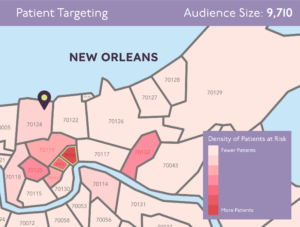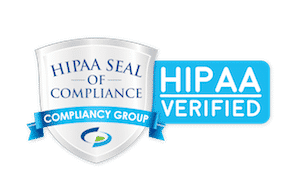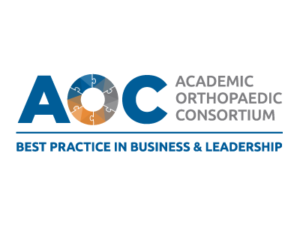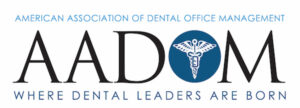Medical practices face a range of challenges, from keeping up with the latest technologies and treatments to managing patient expectations. Among them, one critical area often takes a backseat — the financial health of the practice.
Just like any other business, your medical practice must be sustainable to continue providing services to your patients. Achieving this sustainability requires viewing your medical procedures as products and distinguishing between low and high-margin procedures. Once you understand this difference, you can ensure that your products reach the right audience and secure the financial viability of your practice.
medical procedures as products and distinguishing between low and high-margin procedures. Once you understand this difference, you can ensure that your products reach the right audience and secure the financial viability of your practice.
The Concept of Medical Procedures as Products
Traditionally, medical procedures weren’t viewed in the same light as tangible products on a store shelf. However, with growing competition and patient empowerment, adopting the mindset of seeing your medical procedures as products has become essential. And just like businesses assess the profitability and demand for their tangible items, you must evaluate which of your procedures are most lucrative and in demand.
This perspective shift, centered around medical procedures as products, is not solely about profitability. It’s about understanding the entire ecosystem around these products. What do patients want? Which procedures have the highest satisfaction rates? Which ones provide the best outcomes? By viewing medical procedures as products, you can gain valuable insights into your patients’ needs and preferences, leading to improved patient care and better financial health.
However, a critical aspect of this product-oriented mindset is discerning between low and high-margin procedures. A high-margin procedure is one that, after all expenses have been deducted, leaves a significant profit. In contrast, a low-margin procedure might barely cover its costs or even result in a loss. At the same time, the margin isn’t solely about the direct cost of the procedure. It includes various factors like equipment costs, staffing costs, aftercare and follow-up costs, and even malpractice insurance implications.
While it’s neither feasible nor ethical to solely focus on high-margin procedures, being aware of the margins of each procedure is critical. This helps you make informed decisions about which services to promote, how to price them, and where to allocate resources for future growth.
What Makes Medical Procedures High Value?
When categorizing medical procedures as products, it’s essential to pinpoint which ones stand out as high-value, and profitability, as an obvious factor, often takes the forefront. Consider laser eye surgery as an example. This sought-after procedure can command a high price tag, and when managed efficiently, can lead to notable profits after accounting for all associated costs. From the perspective of medical procedures as products, this places a procedure like this one prominently in the high-value category.
Another factor that leads to high profitability is the demand. Let’s take flu shots during the flu season. While each shot might not have a massive margin, the sheer volume of patients seeking it can translate to considerable overall profits. So, even with smaller individual margins, procedures in high demand can still be perceived as high value due to their cumulative effect.
Differentiation is another sign of high value. Suppose your practice specializes in a particular minimally invasive surgery technique that has fewer complications and quicker recovery times compared to conventional methods. Even if other practices offer a similar procedure, this differentiation in your medical procedures as products allows for higher pricing and strengthens your practice’s reputation.
Lastly, a different range of services improves the value of your medical procedures as products. If a patient comes in for weight management consultation and you offer them nutritional advice, fitness training, and mental health counseling as a package, the combined value is more than the sum of its parts. This all-encompassing approach enhances the value of medical procedures as products, encouraging patient loyalty and satisfaction.
Bring Your Medical Procedures Closer to Patients
Once you embrace the idea that your medical procedures are the tangible products you offer, you have to make sure your target audience knows about them and understands their value. This enables you to improve your services, resonate with your patients, and stay ahead in a fiercely competitive market.
Understanding and promoting medical procedures as products requires a primary focus on patient-centered care. Instead of just presenting the technical details of a new minimally invasive surgery you offer, it’s beneficial to actively highlight the benefits such as quicker recovery times, reduced pain, and minimal scarring. For example, with a patient’s consent, making a video testimonial discussing their swift recovery and minimal discomfort can be very impactful as well as sharing before-and-after photos on social media platforms.
With patients increasingly turning to online reviews, it’s essential to have a proactive approach to reputation management. Encourage patients to leave you feedback and handle potential negative reviews promptly and professionally. Highlighting patient outcomes and experiences with your medical procedures as products can bolster trust and drive more patients to your practice.
Also, having an impactful online presence is crucial. Whether you’re introducing a new cosmetic procedure or a breakthrough in physiotherapy, patients should be able to find comprehensive, easy-to-understand information about it. A responsive website, informative blog posts, and active social media profiles can effectively showcase your medical procedures as products in demand.
 Patient targeting can further refine your healthcare marketing efforts, especially when promoting high-margin procedures. With the help of data analytics, you can pinpoint the people near you who need the procedures you offer. This allows you to send specific marketing messages to these distinct people, leading to more effective engagement and improved conversion rates.
Patient targeting can further refine your healthcare marketing efforts, especially when promoting high-margin procedures. With the help of data analytics, you can pinpoint the people near you who need the procedures you offer. This allows you to send specific marketing messages to these distinct people, leading to more effective engagement and improved conversion rates.
Finally, as the line between healthcare provision and business continues to blur, promoting your medical procedures as products will only grow in importance. However, it’s crucial to maintain sight of regulations like the Health Information Portability and Accountability (HIPAA). When showcasing the success of your medical procedures as products, always prioritize patient privacy and comply with healthcare marketing standards.
Medical Procedures as Products for Success
Apart from fantastic medical skills, succeeding in the modern healthcare landscape demands business insights as well. Embracing the concept that medical procedures are, fundamentally, the products you offer allows your practice to take a strategic, dual approach, grounded in both financial foresight and patient-centric care. While being mindful of margins and profitability is essential for a growing practice, every decision should be guided by the outcomes and well-being of patients. After all, the most rewarding profit is a healthier, happier patient community. As this community grows, so does the reputation and growth of your practice.
To further pave the way for success, you can rely on SocialClimb. Offering a suite of HIPAA-compliant features including reputation management, patient targeting, and campaign tracking, SocialClimb empowers you to increase high-value procedures and, therefore, the financial health of your practice.
Get a free patient targeting report. This report will identify patients in your area who need the high-value procedures you want to provide—from c-sections to hip replacements.











